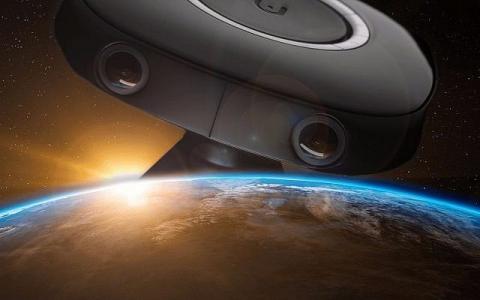Israeli VR Camera Goes To Space
For Human Eyes, being part of the space project represents a major coup in the VR market, one that comes on the heels of much work, research, trial and error. Established in 2000, the Israeli firm, which has more than 70 patents to its name, was initially focused on printing technologies and only approached VR in 2014.
The idea, said Human Eyes CEO Shahar Bin-Nun, was to develop a VR camera capable of doing affordable 3D work at high resolution. With a top-line VR camera ranging from $15,000 to $60,000, and a simple one going for as little as $200, Human Eyes’ Vuze model sells for $800 to $1,000. The Vuze is a relatively small camera, with patented algorithms the company said allows it to create the same high-quality 3D despite its compact size.
VR cameras allow customers to take immersive photos and videos that can be viewed with headsets. Currently 3D cameras are used mostly by journalists and filmmakers, and have yet to become a mass-adopted market commodity. The development process was not without its setbacks. Like many 3D cameras, the Vuze experienced problems with overheating. Human Eyes engineers adapted a cooling solution that absorbs and redirects heat through a strategically placed metal plate that allows it to run for hours without overheating. This mechanism is one of the reasons the camera was selected for the space trip, Bin-Nun believes.
Human Eyes worked with National Geographic to develop a unique model for the space mission, one that could be connected to a space-station based power source, as opposed to batteries. And now, after much work, a 4.5-inch diameter piece of the Israeli startup ecosystem is orbiting the earth.
Bin-Nun said the deal with National Geographic is “content partnership,” in which Human Eyes handed over use of its technology for free and in change receives heightened brand awareness. Virtual reality and augmented reality technologies are projected to have an economic impact of $15.6 billion by 2020, and a market size of $215 billion, according to market research company Statista. Bin-Nun — whose company employs 33 people at Neve Ilan, west of Jerusalem, plus an additional 12 focused exclusively on Vuze — said he believes that while VR is progressing by leaps and bounds, there are still crucial steps to be taken to ensure that products like Vuze are adopted as part of a mass consumer market. The camera currently offers 4K resolution per eye — basically creating one panorama for each eye — and a total of 8K of full HD data storage.
Better resolution and frame rate, and reducing user nausea caused by headsets, are issues which have not been definitively resolved by the market, although he believes Vuze is on the right track with its current improvements. “This ecosystem is moving forward very fast,” said Bin-Nun. “But still, there’s a long way to go until John Smith from Alabama or David Cohen from Hadera will embrace the technology and [use it] for pure consumer application.”

